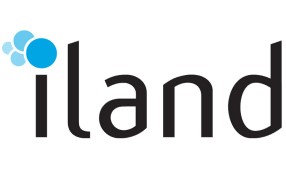
But, before you go from toe-in-the-water to taking the full cloud plunge for the rest of your applications, here are a few lessons you can learn from DRaaS.
Lesson One: Determine what you need, before it’s too late
Setting up DRaaS focuses the mind on two questions. “What do I need to run my business?” And, “how much power and capacity do my applications need?” On a day-to-day basis, we don’t ask these questions. Instead, we add incremental compute power and capacity when needed.
But before moving production applications to the cloud – whether for DRaaS or IaaS, you must calculate your existing resource demands. This requires an assessment or environment analysis tool. An example is the iland Catalyst tool. This helps predict your current and future needs over several months. In many cases, these tools enable you to test your environment before deploying.
This assessment and testing in a DRaaS model is duplicated easily in an IaaS environment. The beauty of a cloud assessment is its ability to uncover your deficiencies before making the migration in a safe, controlled environment, long before a crisis occurs.
Lesson Two: DRaaS is not just for disasters
Once your DRaaS environment is in place, it’s there when you need it with an isolated, production-ready copy of your environment in the event of unplanned downtime or data loss.
DraaS also provides a sandbox where you can test security implementations, new hardware and software upgrades and new applications before you unleash them to a production environment.
The result is, you can run doomsday scenarios to predict outcomes from events that can produce infrastructure outages, or simply gain reassurance that an upgrade or system change won’t produce unforeseen consequences.
Lesson Three: Try before you buy – cost, performance, resilience
After deploying cloud-based DR, you can begin recording real-world performance and capacity metrics. This will help give you an idea of what it will take to move the rest of your infrastructure to the cloud. You can predict how your environment will perform in the cloud, what it will cost, and identify efficiencies and potential risks. Your DRaaS experience offers insights and analysis of performance and costs of doing business in the cloud, which you can use to justify additional cloud strategies.
You can also take this opportunity to test the resiliency and connectivity of your future cloud infrastructure. For example, if your DR site is in another part of the country that produces a latency problem – you’ll know that your infrastructure needs to be hosted in a closer data center.
Lesson Four: Eliminate the “fear” of cloud migration with DR as a stepping-stone
Starting a cloud migration from scratch is daunting. It’s a lot of work to evaluate and plan around your workloads, applications, network and security and compliance at once. But, if you start with a cloud-based DR, you have time to work out those critical interdependencies incrementally. As you explore what you’re planning to recover and how you’ll orchestrate the process, you can ease into conducting business in the cloud and become familiar with cloud management tools.
You’ll also learn how to work with data centers and your cloud service provider. Issues such as data sovereignty and security standards need to be dealt with on a timely basis. Working with your provider before you deploy, in terms of management and establishing SLAs, will accelerate your time to deployment with other cloud services.
These testing and management experiences with DRaaS will go a long way to building confidence in the cloud, and with working with your cloud service provider. It will also give you the flexibility to deploy mission-critical applications at the best time for your business. For example, comfort and familiarity with the provider will enable you to plan ahead for a cloud migration during an optimal timeframe, such as when your on-premise hardware and licenses are about to expire.
Challenges
Of course, there are challenges when adopting any new operational and financial strategy, including cloud services. Time, in particular, is always a limited resource. But, as disaster recovery is pretty much non-negotiable, at least you can kill two birds with one stone if you leverage your work with DRaaS to expedite your move to IaaS.
Security concerns are another potential impediment as you weigh the potential risks of entrusting sensitive data that has previously been retained on-premises and moving it to the cloud. Seek reassurance from your CSP over standards, certifications and the level of consultancy they can offer to ensure you have the right security and compliance in place to make the move painless and risk-free.
Ultimately, moving to the cloud allows you to refocus your IT initiatives to deliver value, rather than merely keeping the lights on. It does so by reducing costs by diverting resources away from hardware maintenance and support. By starting with DRaaS and learning these key lessons, you can lay the groundwork for a future in the cloud with an investment that pays long-term dividends.
iland is a global cloud service provider of secure and compliant hosting for infrastructure (IaaS), disaster recovery (DRaaS), and backup as a service (BaaS). It is recognised by industry analysts as a leader in disaster recovery. The award-winning iland Secure Cloud Console natively combines deep layered security, predictive analytics and compliance to deliver unmatched visibility and ease of management for all of iland’s cloud services. Headquartered in Houston, Texas and London, UK, iland delivers cloud services from its data centres throughout the Americas, Europe, Australia and Asia.


























